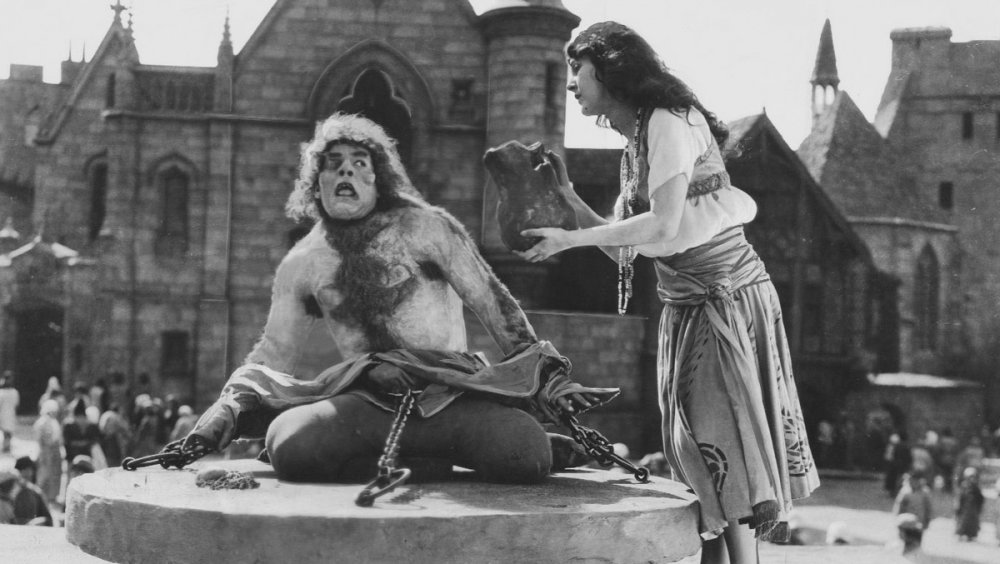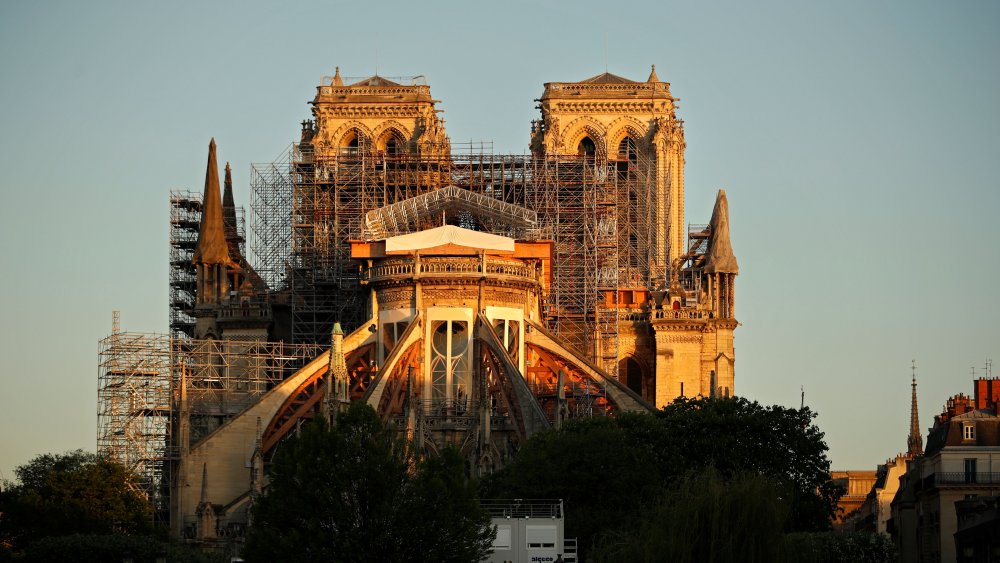The Truth About The Real-Life Hunchback Of Notre Dame
The magic of Disney is rooted in the origin of all magic: illusion. The company has a knack for making bankable, kid-friendly animated movies based on seriously dark source material. Many beloved classics, like Beauty and the Beast, Pinocchio, and The Little Mermaid have details that would leave kids weeping and screaming in their restless dreams at night. For instance, did you know that in the unsanitized tale, Pinocchio kills Jiminy Cricket with a hammer, and gets hanged, before becoming a real awful boy? Then there's the original little mermaid, who is doomed to die from exposure to sunlight unless she stabs her prince to death, so she throws herself into the sea and dissolves into foam.
Even those carbuncles on the butt of happiness pale in comparison to the of The Hunchback of Notre Dame, though, which Disney adapted from the Victor Hugo novel of the same name. Hugo's Quasimodo "had been born one-eyed, hunchbacked, lame." The bells he loves intensely render him deaf. People mercilessly ridicule the hunchback, calling him "an abortion of a monkey" and a monster. Eventually, the woman he falls in love with, Esmeralda, gets executed and Quasimodo dies holding her corpse. When people attempt to separate their skeletons, Quasimodo's bones crumble into dust.
However, in an interesting twist on the typical formula, it seems that Hugo originally pulled an anti-Disney, taking the life of a real person and turning it into a tear-soaked nightmare.
Notre damn, Quasimodo was real?
To the likely delight of Disney fans and the depression of people familiar with Victor Hugo's version, the character Quasimodo appears to be inspired by a real-life Parisian. As the Tate institution details, a memoir by British sculptor Henry Sibson describes the time he worked in Paris repairing the Notre Dame cathedral in the 1820s. After getting the boot over a workplace dispute, he got a new job working just outside the city. His new crew was led by a carver named M. Trajan, who just so happened to have a "humpbacked" boss who was almost exclusively referred to as "the Hunchback." Not much else is said of him, except that he was a government sculptor who preferred not to fraternize with the carvers and that he enthusiastically approved of hiring Sibson.
Tate says the people Sibson worked with would have operated in the area of Paris where Victor Hugo lived. Hugo closely monitored the restoration of Notre Dame and may have even known both Trajan and "the Hunchback." This is evidenced not only by Quasimodo in The Hunchback of Notre Dame, which was published in 1831, but another famous Hugo work — Les Miserables. In an early draft, the protagonist is named Jean Trajean, which the author later changed to Jean Valjean. Luckily, his grim depiction of Quasimodo sounds about as true to life as Disney's enchanting counterpart.

